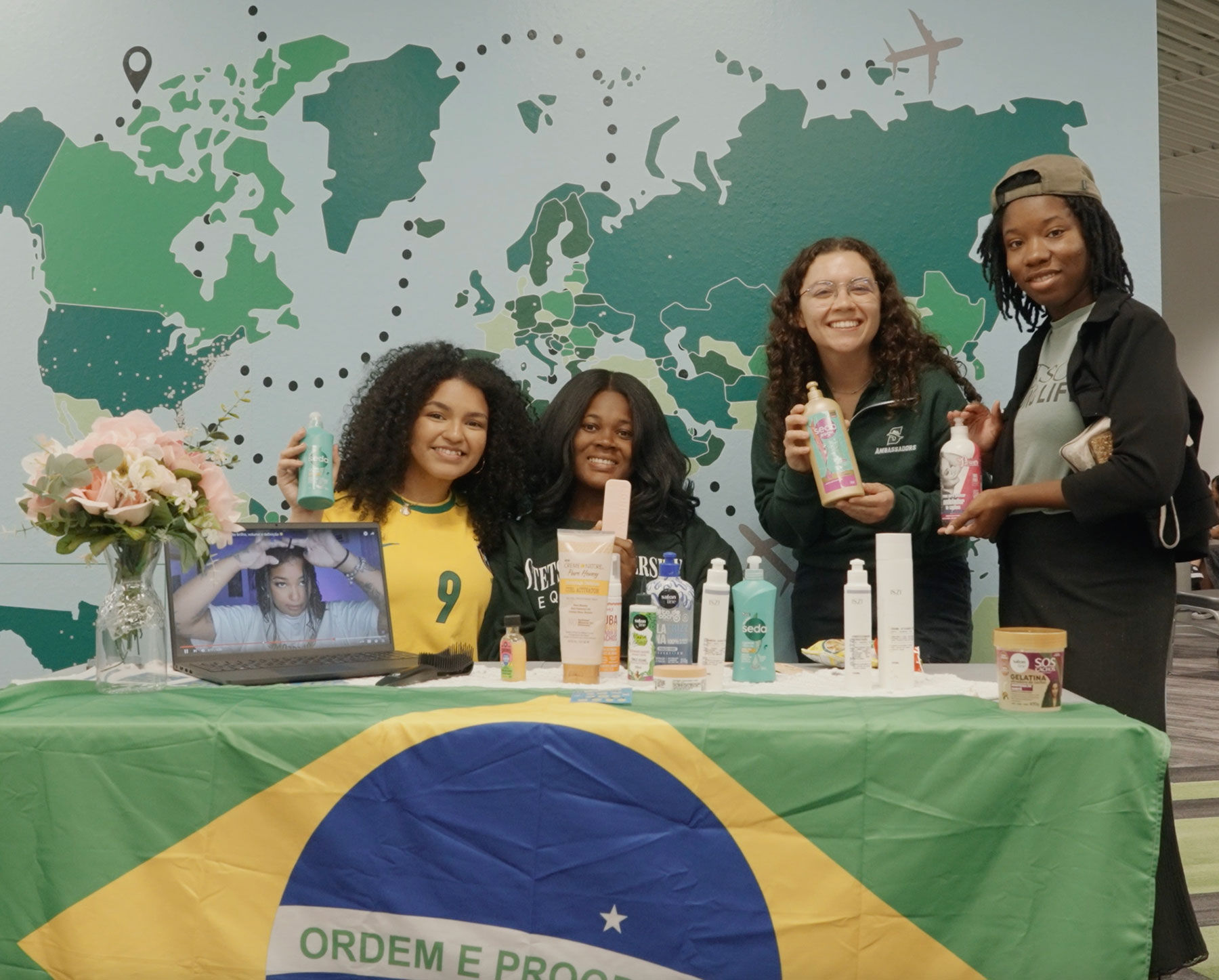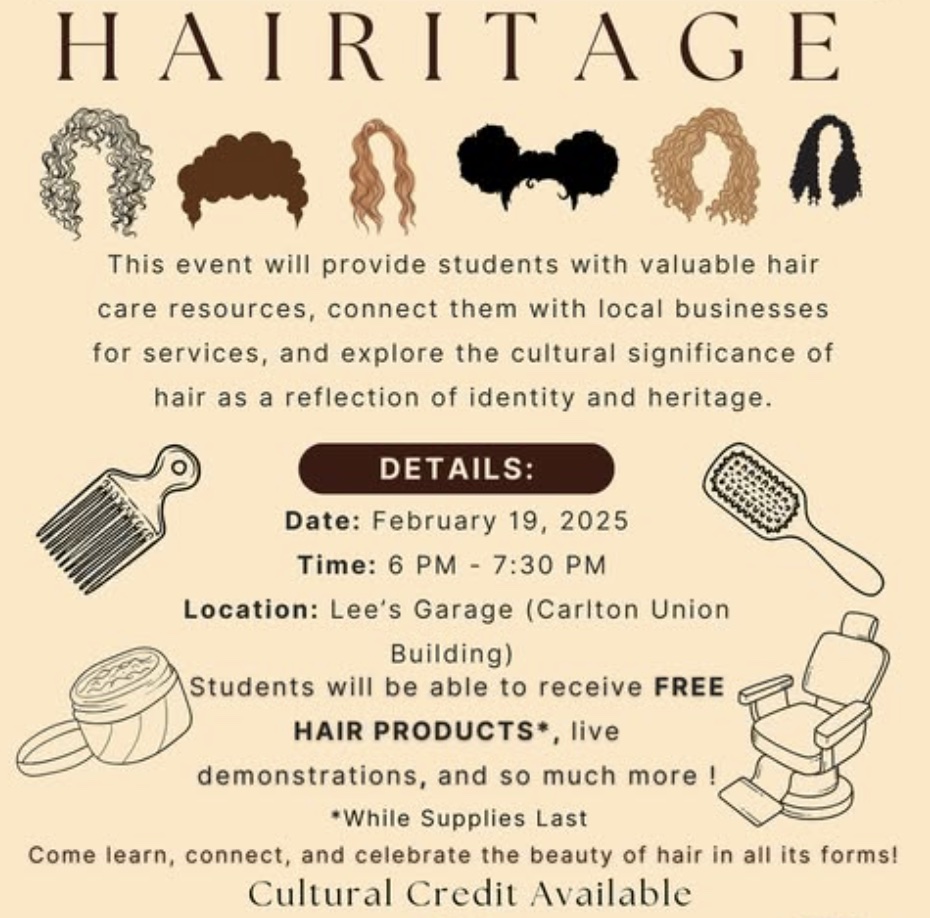Hairitage: Connecting Culture and Hair

By Lawrencia Agbovi ’26
As an African girl from Ghana, I did not understand how important hair representation, especially for my hair texture, was. My hair was either cut to the scalp for school or permed with chemicals during festive occasions like Christmas or Easter.
One exciting thing most girls look forward to after completing high school in Ghana is the freedom to do whatever they want with their hair, and I was no exception.
With little to no education on how to care for my hair, I depended on the knowledge my mother got from her mother and local hairdressers who preferred permed hair over their 4c coils.
“Natural hair is hard.” “Natural hair is difficult to manage,” they said.
Well, I used to say the same things because I did not know what products to use on my hair, so naturally my hair was left dry and craving moisture.
It took time, years even, tutorials and a journey of self-discovery for me to truly understand that my hair was more than just something to be styled — it was, and still is, a part of my heritage.
Hairitage: Connecting Hair and Cultural Identity
For someone like me, the Hairitage event organized by the Multicultural Student Council in February was a reminder of the institution’s commitment to creating a safe space where the various hair textures and styles across different cultures were celebrated.

The event highlighted the connections between hair and cultural identity, which helped students, faculty and staff understand how something as regulated as hair carries centuries of history, tradition and meaning.
During the event, I learned that from braids to twists, from afros to permed hair, from cornrows to dreadlocks, every hairstyle carries meaning. I have come to learn that some protective styles shield my strands from breakage, others allow me to embrace my roots in a way that sadly many people cannot do freely, and others are used just to enhance my hair’s beauty. The event also allowed me to learn about different hair products and which hair textures they are suitable for.
In the future, I look forward to academic and professional spaces where hair — regardless of its length, volume or texture — is not just tolerated but celebrated. I dream of workplaces where dress codes do not prohibit natural hairstyles, and where young Black professionals especially do not feel pressured to alter their hair in any way to appear “professional.”
My dream extends to a future where textbooks include the rich history of Black hair traditions, where cosmetology schools require training in all hair textures and where salons can confidently serve people of all backgrounds. Most importantly, I hope for educational settings where young children never have to question whether their natural hair is “appropriate” or “neat enough” for the classroom.
Through events like Hairitage and continued advocacy, I believe we can create environments where our full cultural expressions — including our hair — are recognized as valuable contributions to our shared academic and professional communities. On the other hand, I extend gratitude to every individual or organization who keeps creating spaces where every hair texture can be discussed and appreciated, and I say “Ayekoo!”
I believe the real beauty of hair is the freedom to wear it natural, braided, under a wig, cut short, or even locked up anytime, anywhere without judgment or discrimination. Representation matters. Seeing women who proudly wear their hair in any state, who celebrate its versatility and resilience, reminds me that beauty is not confined to one standard: It’s about embracing what makes us unique.
Lawrencia Agbovi ’26 is a computer science major and Bonner Program Scholar at Stetson.
